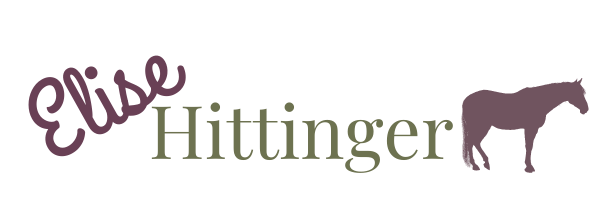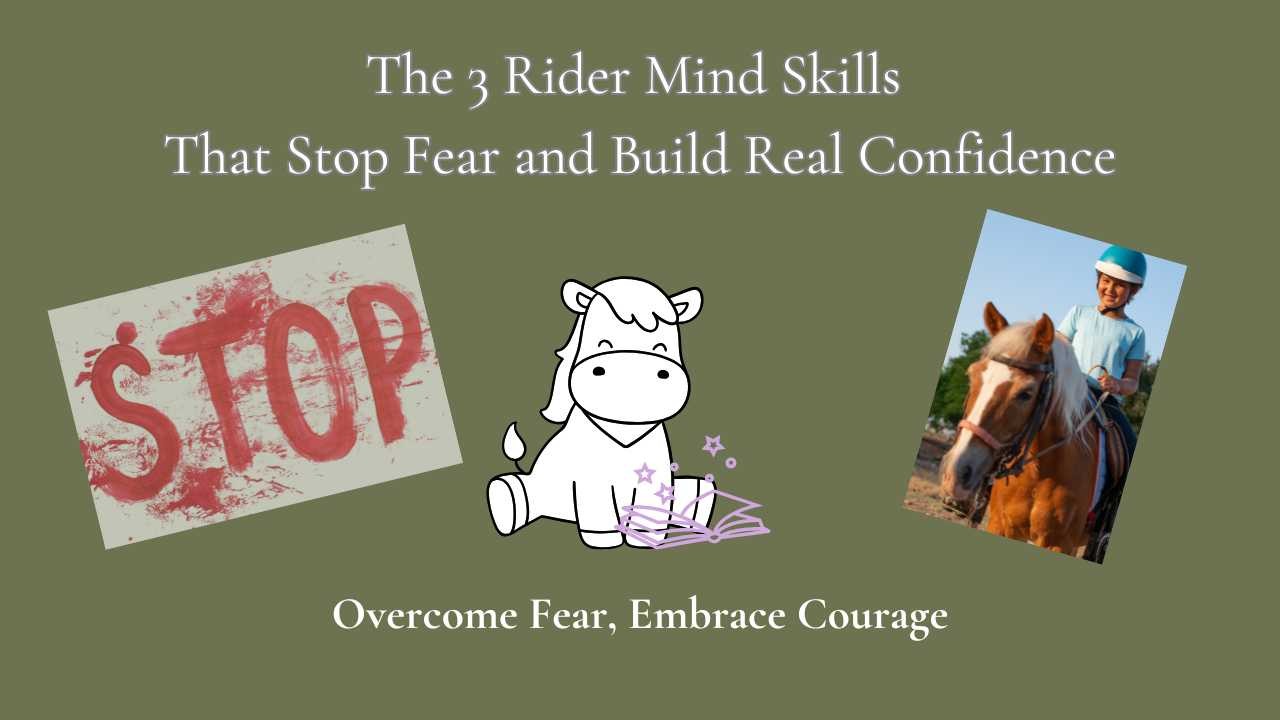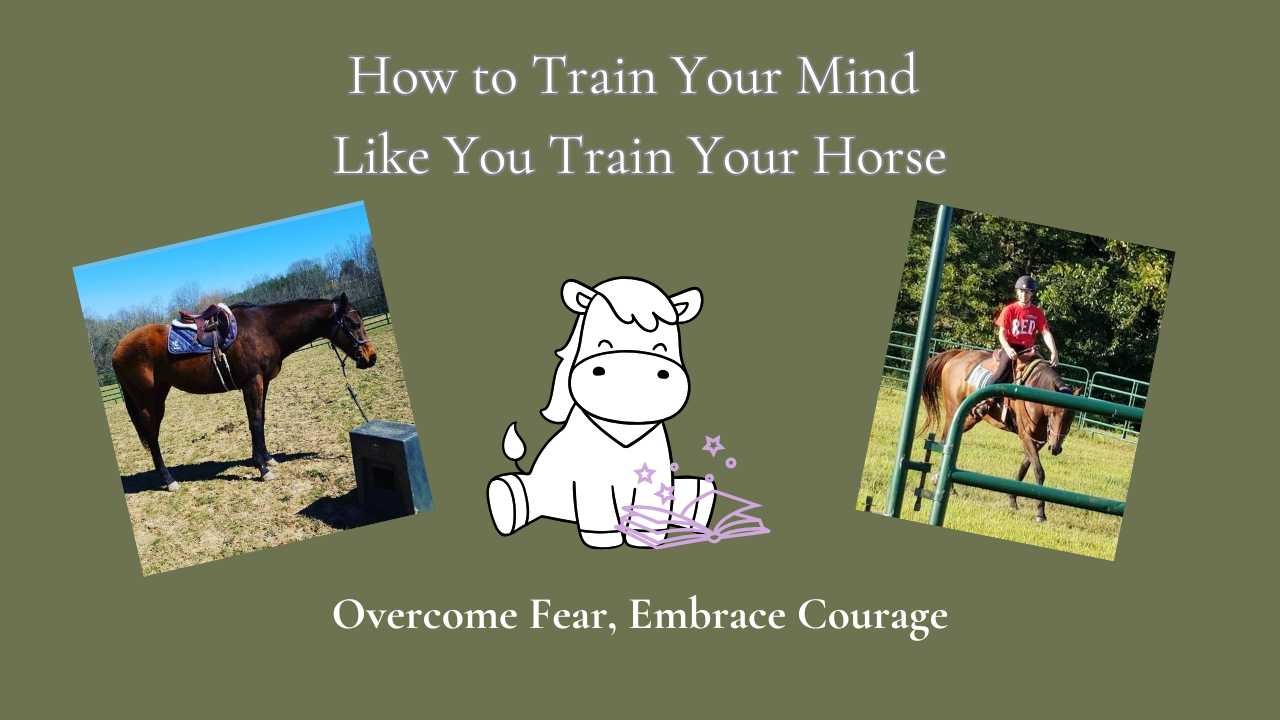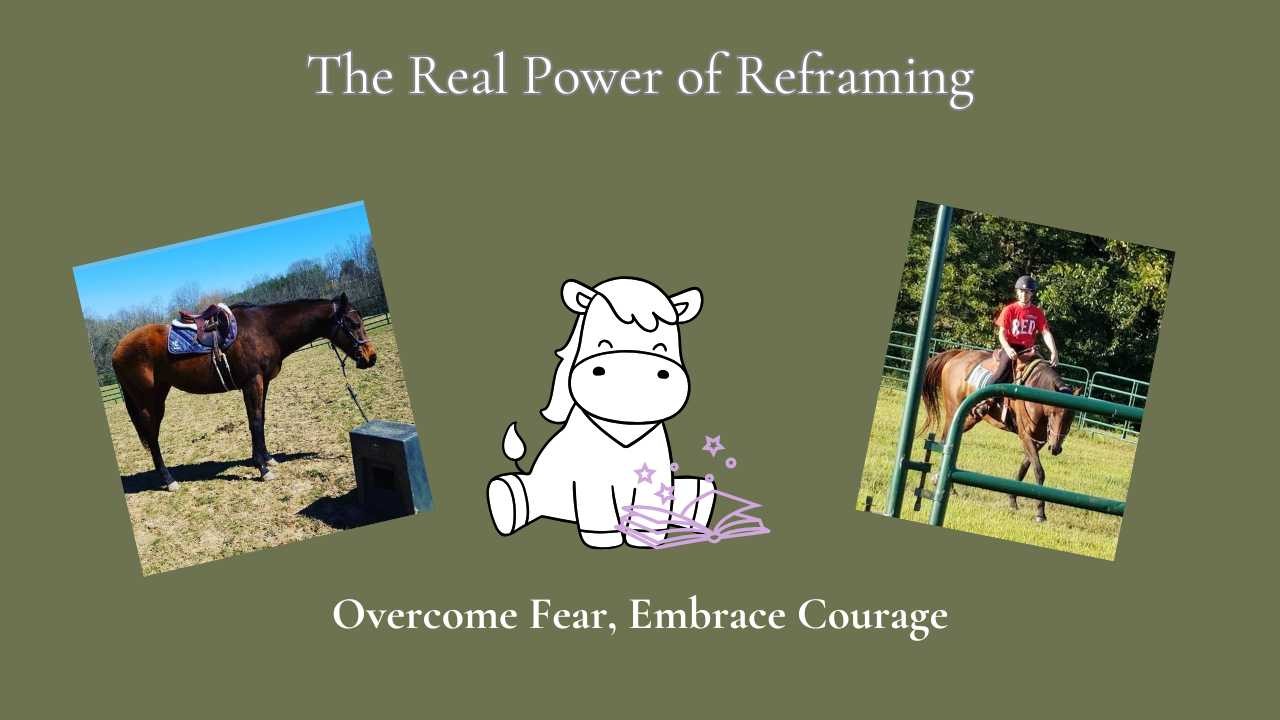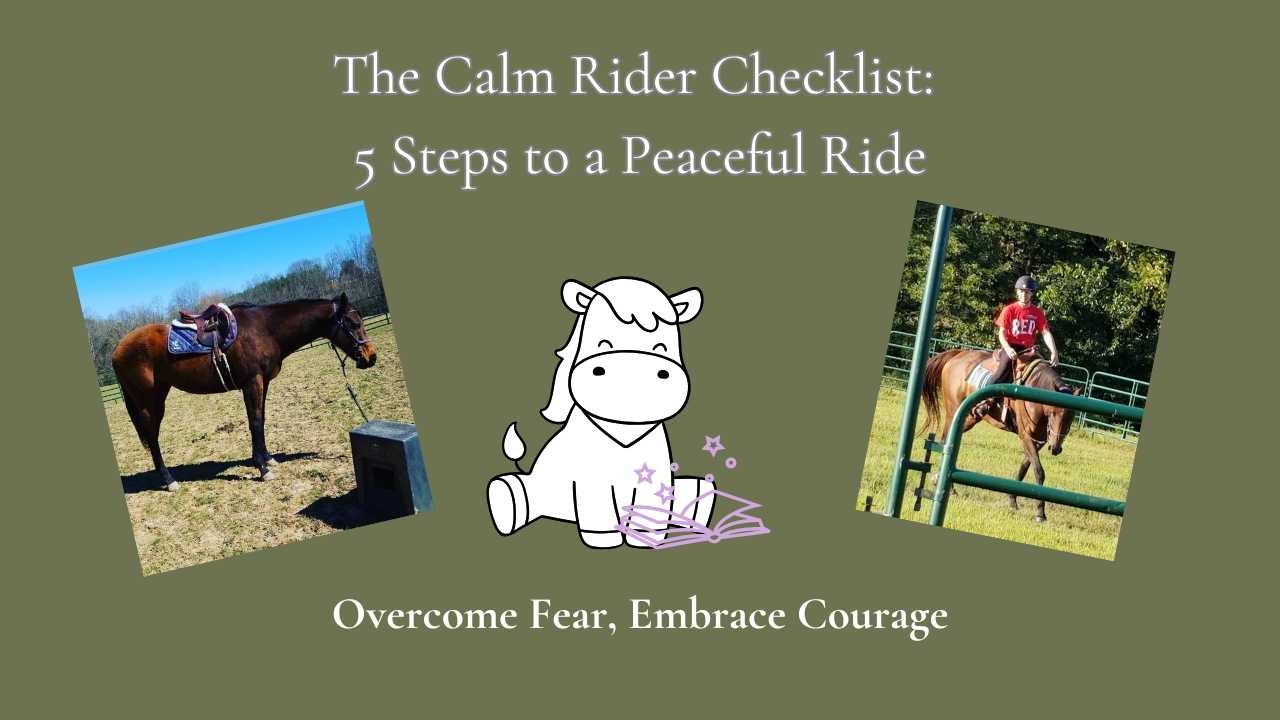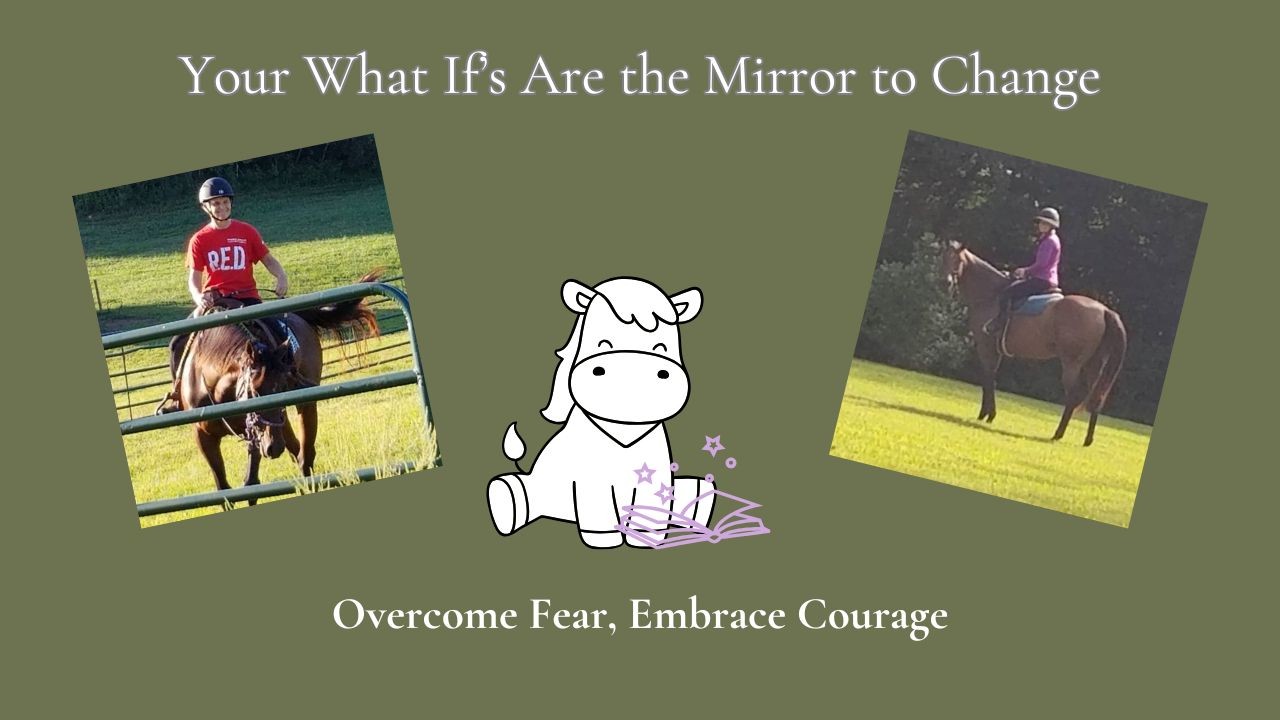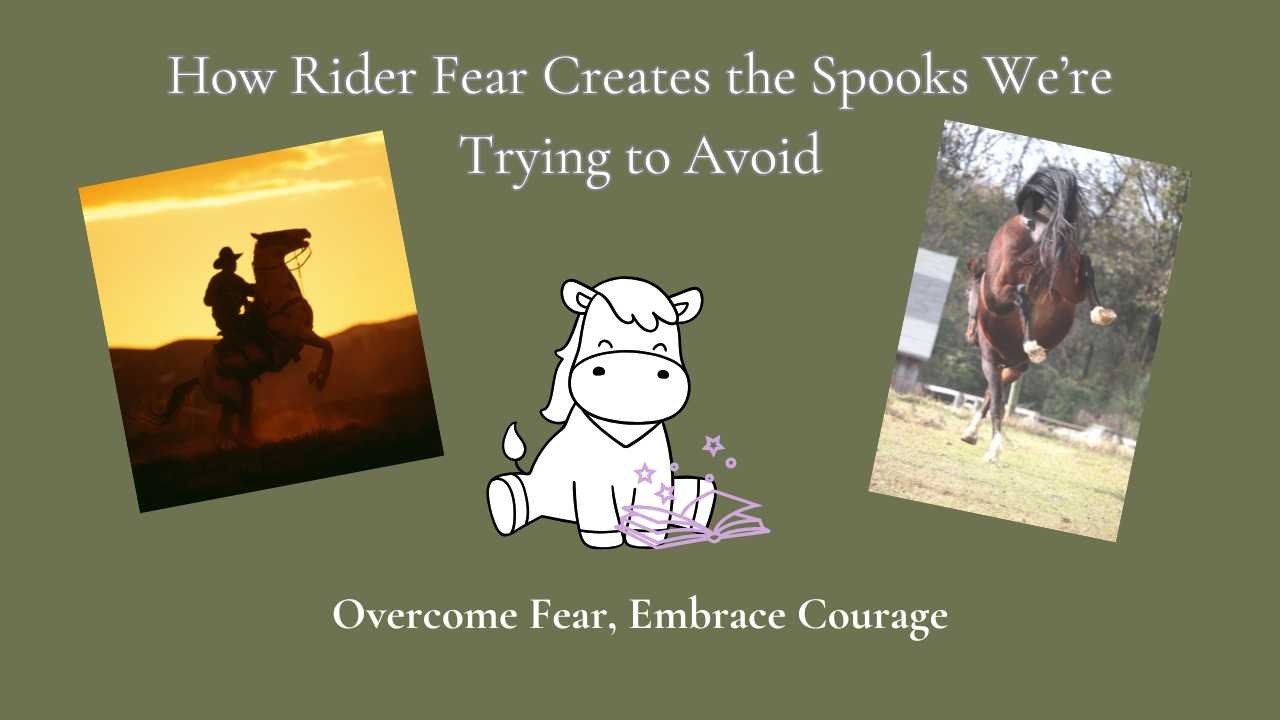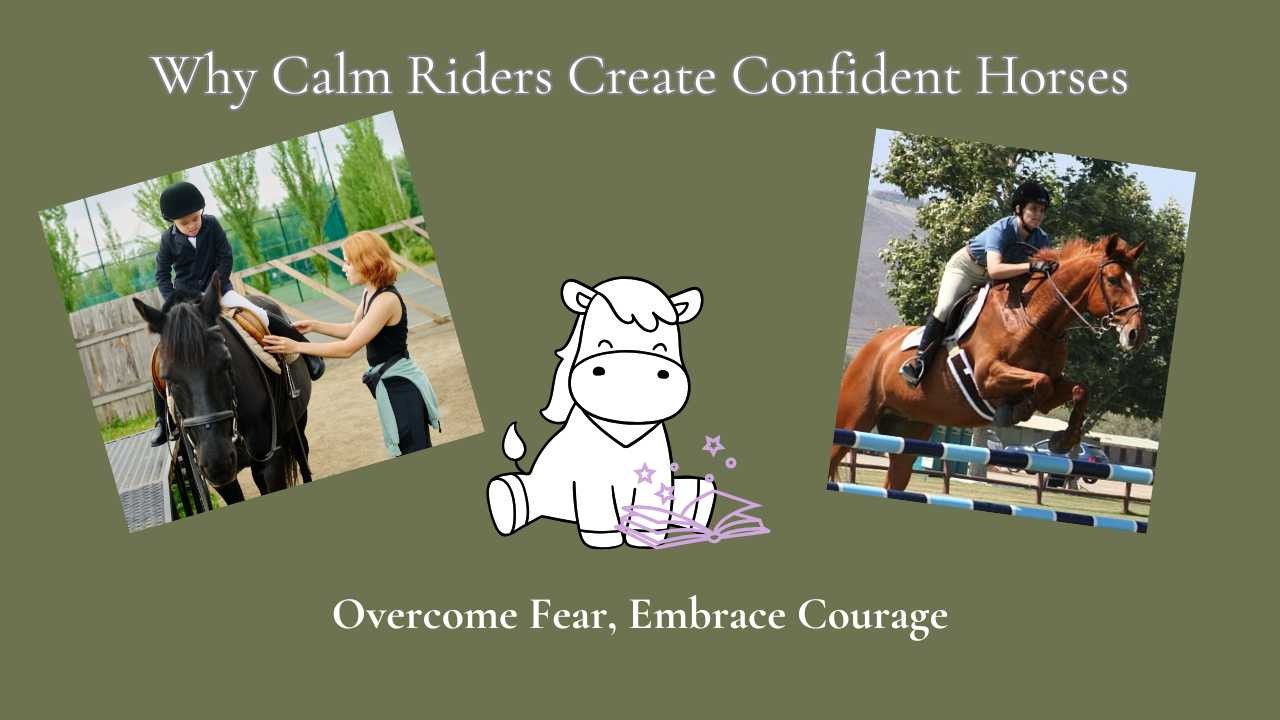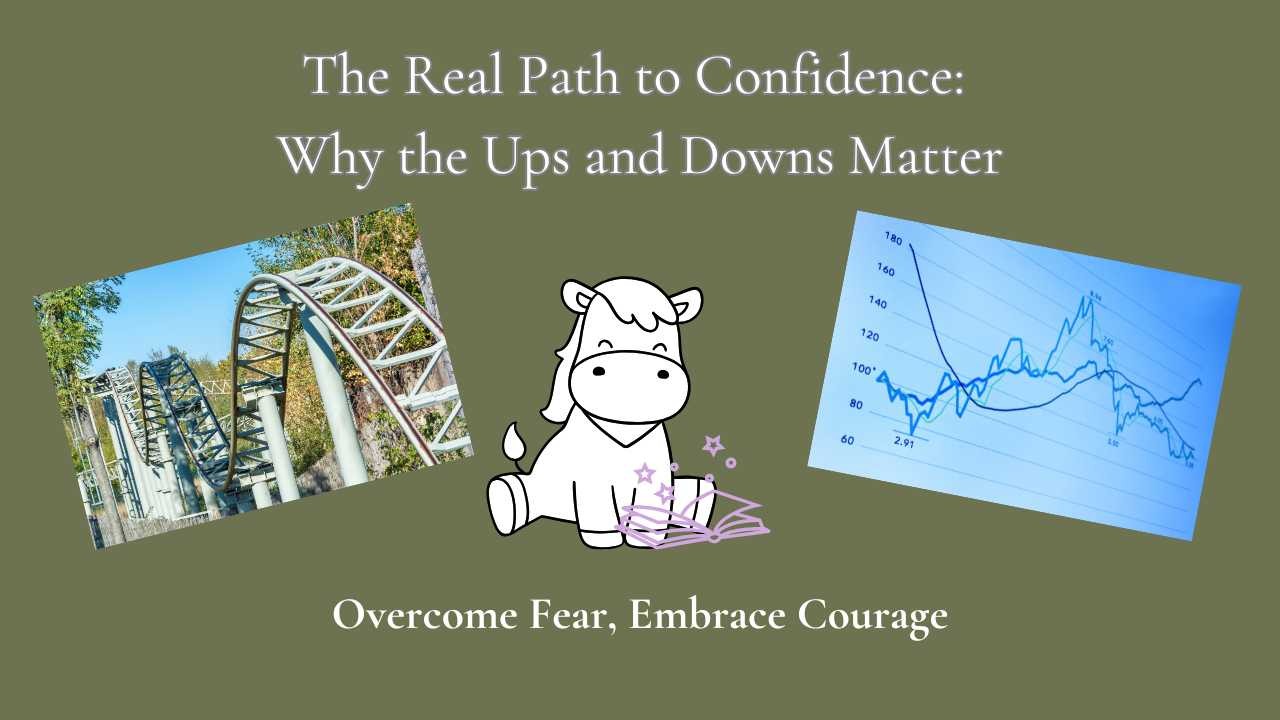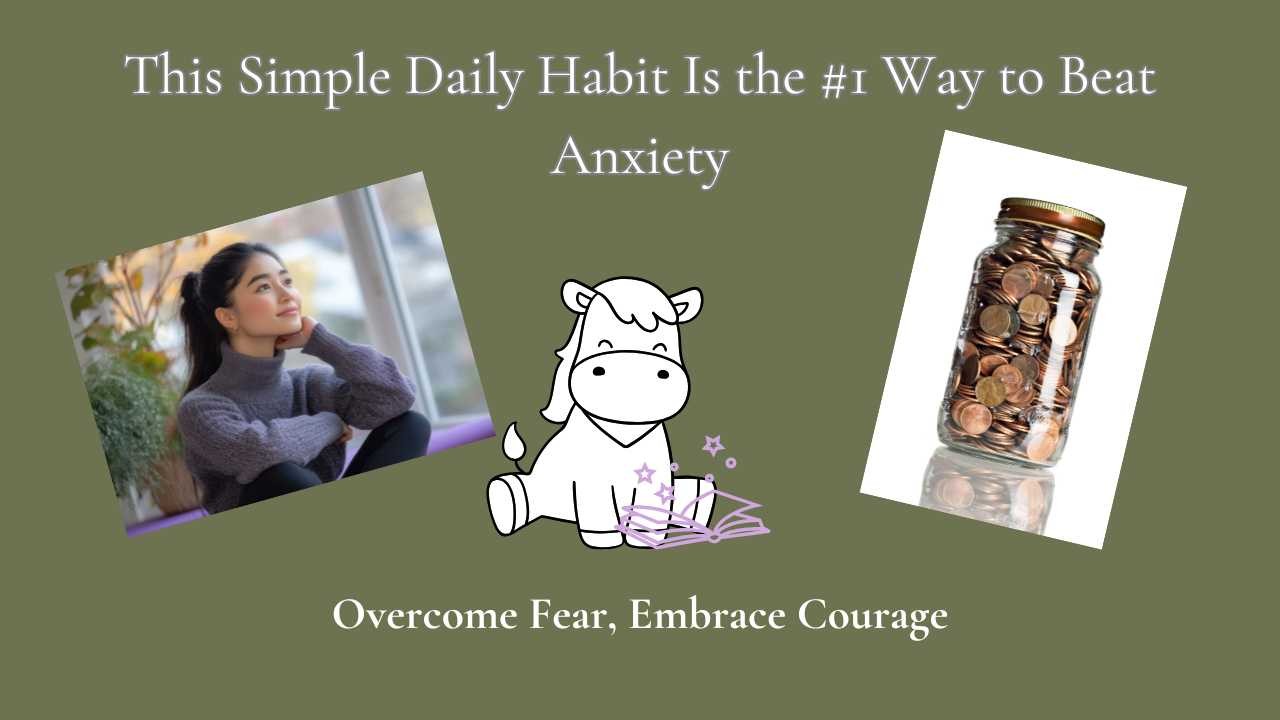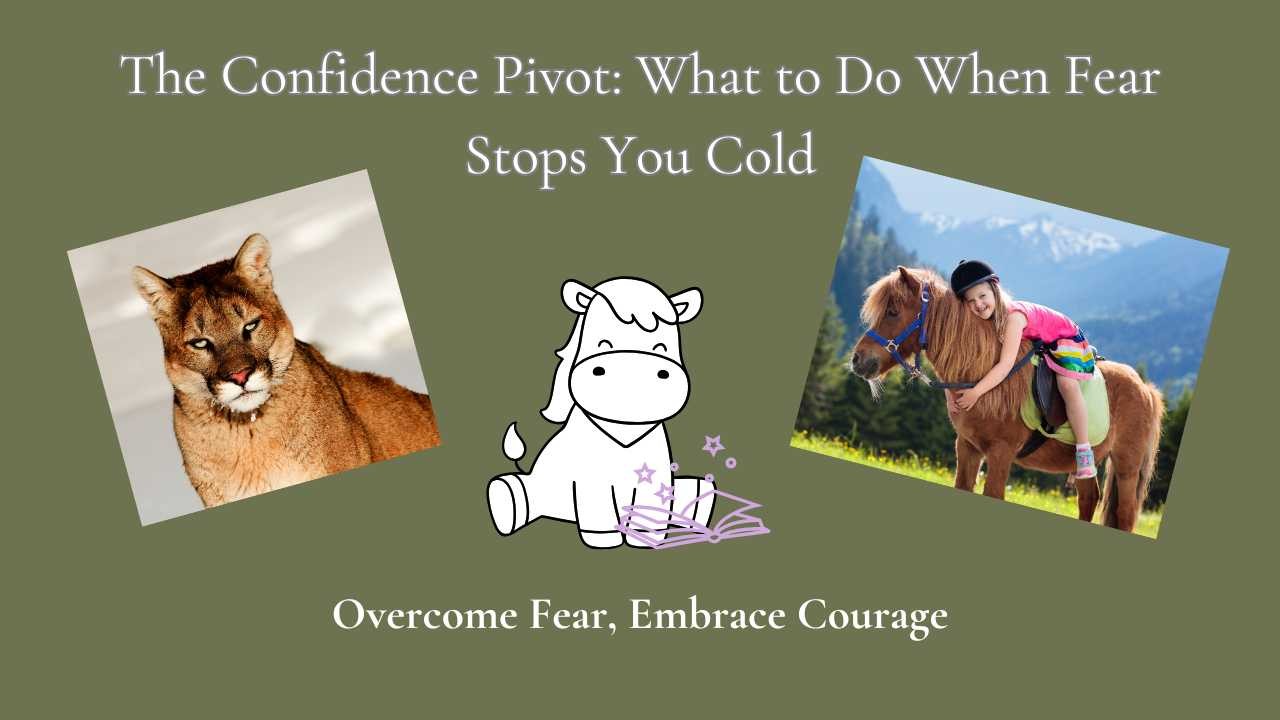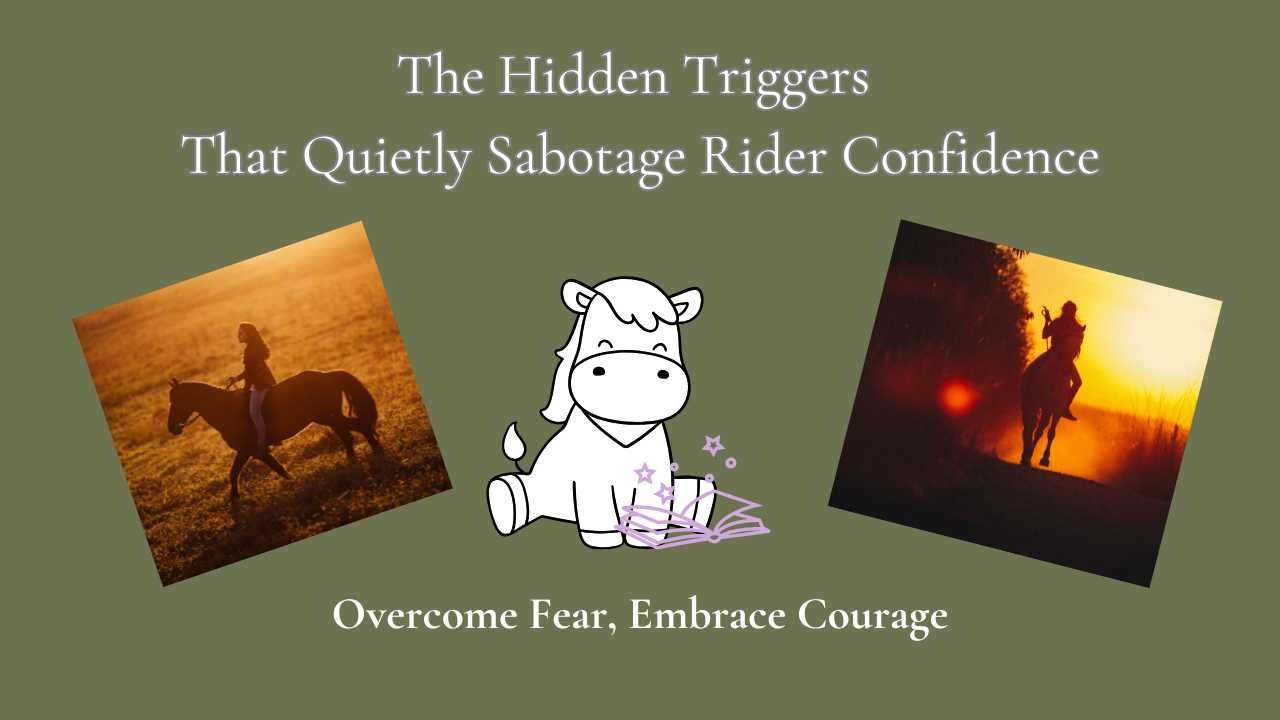
When most riders think of fear, they picture the big events—a fall, a spook, an accident that shakes everything. But the truth? Confidence is often undermined by smaller, hidden triggers that slip under the radar until suddenly, they feel overwhelming.
It works a lot like with our horses. A horse doesn’t usually blow up out of nowhere. First, they flick an ear. Then, their head goes up. Maybe their stride gets tight. Those little signs are the whispers before the shout. And if we don’t notice? That’s when we end up with the spook, bolt, or buck.
The same is true for us. Our hidden triggers often look like:
- A tight chest every time you mount up.
- Avoiding a certain gait or arena corner without realizing why.
- Telling yourself you’re “just too busy” to ride.
- Lots and lots of "What If's".
- SO MANY EXCUSES.
Each of these is a whisper from your nervous system. And just like with your horse, the earlier you catch the signs, the easier it is to reset.
The key is to pause and ask: What’s really going on here? Instead of pushing through, notice the trigger, name it, and reframe it. By catching it early, you stop it from snowballing into a full-blown confidence crash.
Your horse depends on you to lead with calm presence. That starts by leading yourself—listening to the whispers before they become shouts.
👉 Want to learn how to spot those whispers and shift them into strength? Download your very own Confidence Blueprint for 9 strategies to build calm, steady courage. It is a full workshop in an ebook for only $17 and you don't even have to travel. You can do it in you PJ's with a cup of tea. Get your Confidence Blueprint HERE!
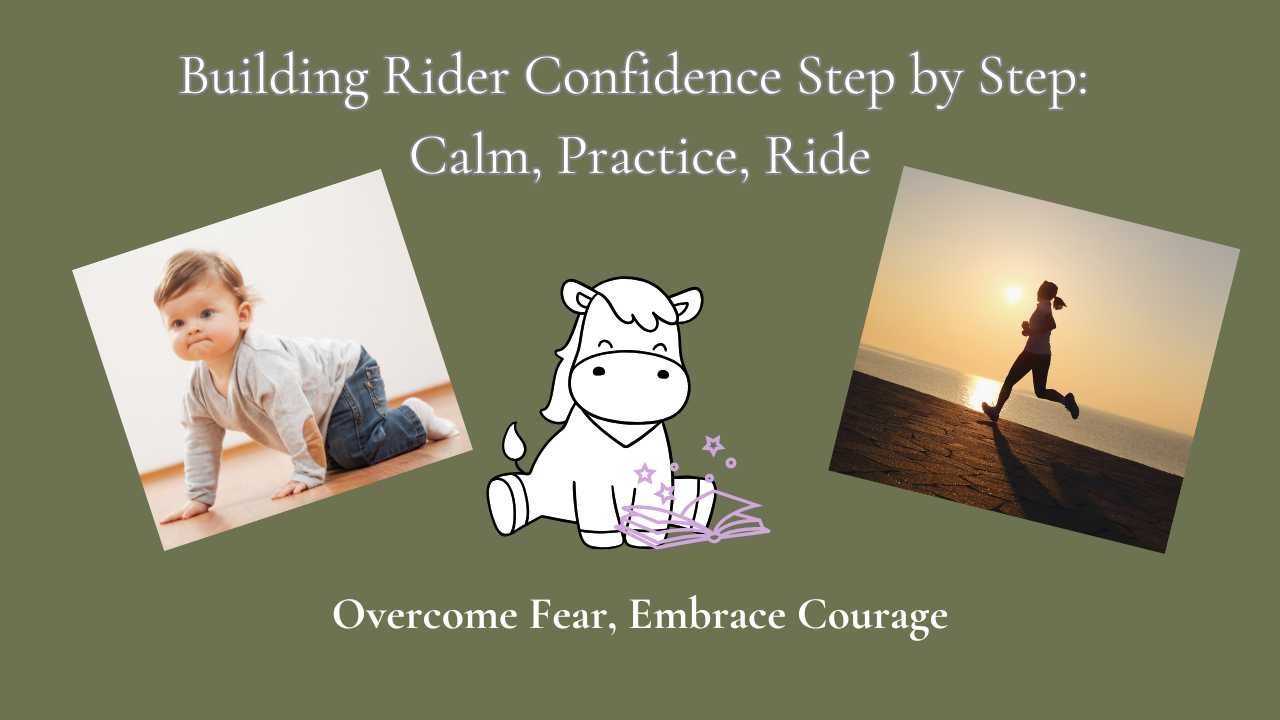
When we think about confidence, it’s tempting to believe some riders are just “born with it.” But that’s as unrealistic as expecting a baby to hop up and run before they’ve learned to crawl.
Confidence in the saddle is no different—it’s a skill, a muscle, something we build step by step.
Think about how we learn to move as kids:
- Crawl first. Slow, shaky, uncertain. This is where you start calming your mind, practicing grounding techniques, and finding steady footing before you even get on your horse.
- Then walk. You begin to add in little stressors—maybe a short ride, a new exercise, or a challenge that’s just outside your comfort zone—while practicing those calm-mind skills. You’re not racing, just getting stronger, building the confidence muscle.
- Finally, run. With practice, your mind and body work together. This is where confidence starts to feel natural again. You can lean into the joy of riding because you’ve done the work to build a foundation.
The truth is, fear doesn’t disappear overnight. But when you approach it in small, intentional steps, you set yourself up for real, lasting confidence. Just like learning to walk, you’ll stumble, wobble, and maybe fall—but every try strengthens your balance.
So instead of asking yourself, “Why don’t I just feel confident already?” try asking, “What step am I on today?” Because each step matters—and each step brings you closer to the ride you’ve been dreaming of.
👉 Want a tool to help? Grab my Confidence Blueprint—9 proven strategies to keep you moving from crawl to canter with courage. It is a full workshop in an ebook at a great price of $17 and you don't even have to travel! Get the Confidence Blueprint HERE!
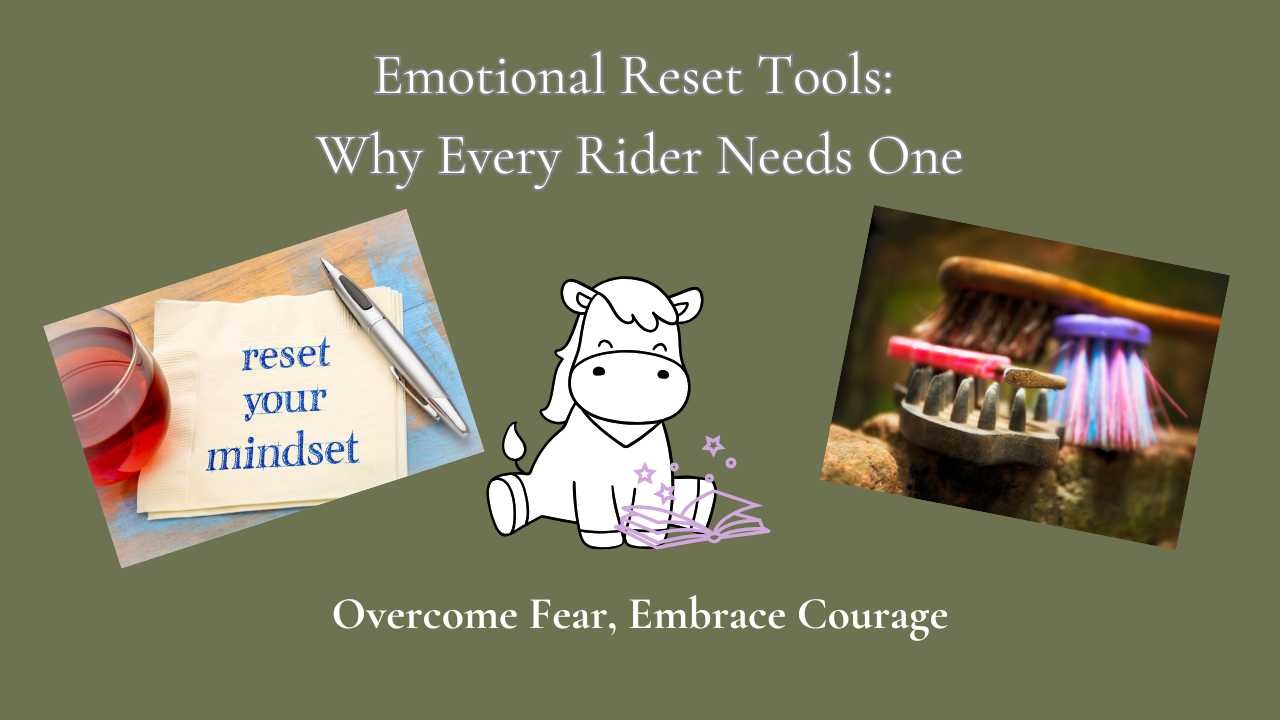
Why Emotional Resets Matter for Riders
Riding isn’t just about technique, tack, or training—it’s about partnership. And that partnership is built on trust. Your horse looks to you for leadership, calm, and confidence. When your emotions spiral out of control, your horse feels it immediately.
That’s why emotional reset tools aren’t just “nice-to-haves.” They’re non-negotiables for riders who want safe, joyful, and connected rides.
We all know what it feels like when fear or anxiety creeps in. Maybe your heart starts racing before a ride, or you tense up the moment your horse spooks at something, you may not even see. The problem is, once your body goes into survival mode, your horse often follows suit.
Without a way to reset, things can escalate fast—for both of you. But when you have a tool that helps you pause, ground yourself, and redirect your energy, you’re showing your horse: I’ve got this. That reassurance creates safety and trust on both sides.
The Safety Net Every Rider Needs
Think of emotional reset tools as your contingency plan. Just like we wear helmets for physical protection, these tools protect your partnership emotionally. When nerves flare or frustration sneaks in, you have a simple, reliable way to get back to calm before things spiral.
This isn’t about perfection. It’s about being prepared. Having an emotional reset tool in your back pocket means you can recover quickly—so instead of ending a ride in tension, you can return to joy and connection.
Knowledge Builds Confidence
The beauty of reset tools is that they aren’t complicated. Whether it’s grounding with your senses, singing, moving your body, or playing a quick mental game, these techniques give you practical steps to take when your emotions threaten to take over. What works for one person, may not work for everyone so play with them and see which one works for you.
The more you use them, the more your confidence grows. You stop fearing the “what ifs” because you know what to do when emotions rise up. That confidence spills over to your horse, and together, you both relax.
✨ Your horse doesn’t need you to be fearless. They need you to be steady. Emotional reset tools give you the ability to reset, refocus, and ride forward with clarity and calm.
👉 Want to know my 5 favorite emotional reset tools? I put them together in a quick guide just for riders like you. These are the exact tools I use myself and with clients to bring calm back in seconds.
Grab your free copy here ➡️ 5 Favorite Emotional Reset Tools

“Am I going to die?”
That’s the question I asked the paramedic at least a hundred times on the hour-long drive to the hospital. A 17.3-hand horse had flipped onto me—no helmet, the saddle horn in my gut, pinned against a tree. I felt crushed from head to toe; certain I wouldn’t make it.
Physically, I was lucky. My body healed quickly.
Emotionally? Not so lucky. That accident hijacked my confidence.
Emotionally? Not so lucky. That accident hijacked my confidence.
A few seconds was all it took to bury my courage so deep it felt like I’d never find it again. What should have been months of healing turned into 20 years of battling fear, avoiding rides, and trying to figure out what went wrong.
Here’s the truth: your confidence can be stolen in a moment. But it doesn’t have to stay gone.
The good news: you can take it back.
The bad news: it takes work.
The better news: there’s a faster way forward than the decades it took me.
The bad news: it takes work.
The better news: there’s a faster way forward than the decades it took me.
After 20 years of trial and error, I discovered the three areas every rider must work on to reclaim confidence:
1. The conscious mind.
This is the “loud voice” in your head—the part that keeps replaying fear and feeding doubt. Left unchecked, it buries confidence in the shadows. The good news? There are tools to flip that script. My favorite is Courage Pennies—a simple practice of noticing where you already show confidence in daily life and letting those wins add up. (If you don’t have my Ultimate Guide to Courage Pennies eBook yet, grab it here!)
This is the “loud voice” in your head—the part that keeps replaying fear and feeding doubt. Left unchecked, it buries confidence in the shadows. The good news? There are tools to flip that script. My favorite is Courage Pennies—a simple practice of noticing where you already show confidence in daily life and letting those wins add up. (If you don’t have my Ultimate Guide to Courage Pennies eBook yet, grab it here!)
2. The subconscious mind.
Your subconscious has one mission: keep you safe. But it often confuses “safe” with “stuck.” Old beliefs and fears can dig in hard. I used to try and slowly reprogram this by working only at the conscious level—it worked, but it was painfully slow. That’s why now I pair conscious tools with deeper methods like NLP and hypnotherapy to help riders shift their subconscious faster.
Your subconscious has one mission: keep you safe. But it often confuses “safe” with “stuck.” Old beliefs and fears can dig in hard. I used to try and slowly reprogram this by working only at the conscious level—it worked, but it was painfully slow. That’s why now I pair conscious tools with deeper methods like NLP and hypnotherapy to help riders shift their subconscious faster.
3. The body.
When I wasn’t riding much, my body wasn’t in riding shape. And every ounce of stiffness, weakness, or imbalance just amplified my fear. The great news is that physical strength and health are the easiest to change—when you make them a priority, your body supports your confidence instead of undermining it. (I’m 61 and honestly feel better now than I did at 20!)
Confidence can be hijacked in a heartbeat, but it doesn’t have to stay missing. You can reclaim it—by training your conscious mind, rewiring your subconscious, and caring for your body so it supports your courage.
So let me ask you:
👉 What’s one step you can take this week to start freeing your confidence again?
👉 What’s one step you can take this week to start freeing your confidence again?
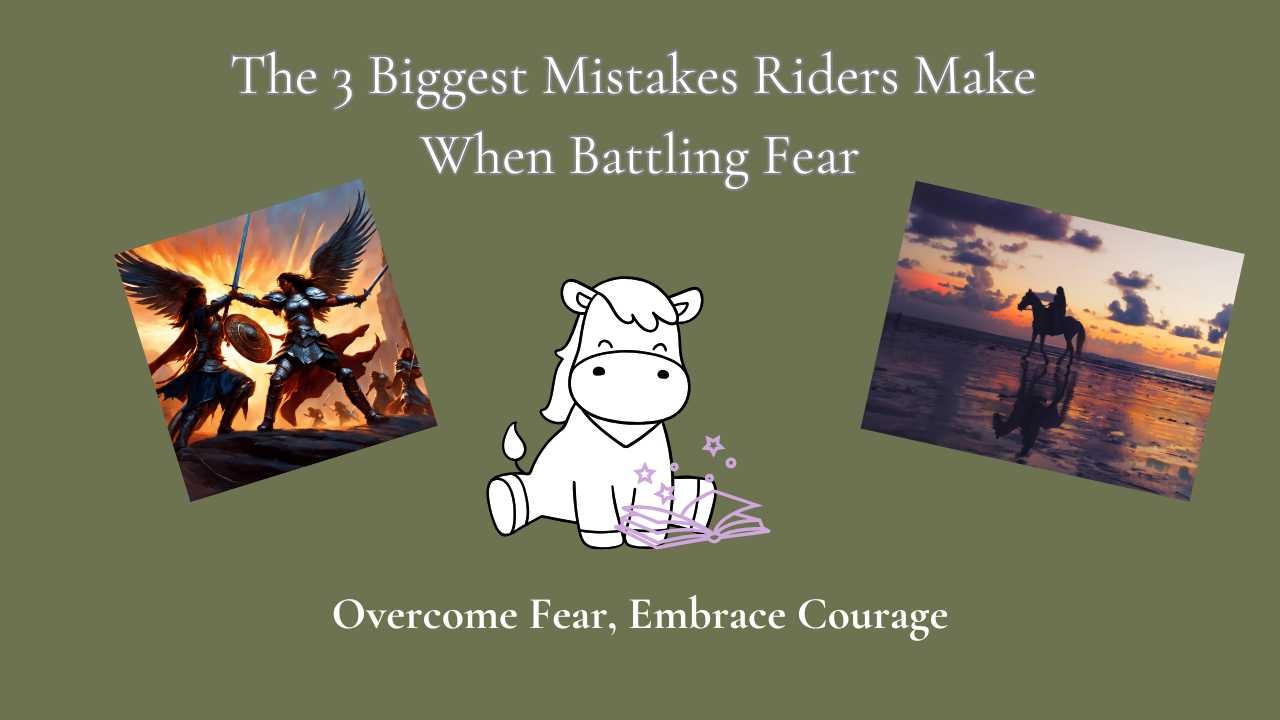
As riders, we get pretty good at reading our horses. We notice the flick of an ear, the tightening of a muscle, or that quick intake of breath. We step in before fear escalates, giving our horse the reassurance and structure they need to feel safe.
But when it comes to our own fear? We tend to do the exact opposite. We ignore it, fight it, or push ourselves harder until it finally explodes—loud, messy, and usually at the worst possible time.
Here are three of the biggest mistakes riders make when battling fear—and the better way forward.
🐴 Mistake #1: Trying to ignore fear completely
We wouldn’t dream of ignoring a horse who’s anxious and jittery, so why do we expect ourselves to “just push through”? When fear is shoved down, it doesn’t disappear—it builds pressure until it bursts.
We wouldn’t dream of ignoring a horse who’s anxious and jittery, so why do we expect ourselves to “just push through”? When fear is shoved down, it doesn’t disappear—it builds pressure until it bursts.
The shift: Instead of silencing fear, acknowledge it. Treat it like you would your horse’s signals—valuable information about what’s going on. Naming it takes away its power. Use the information to find your calm before continuing.
🐴 Mistake #2: Comparing yourself to other riders
You’ve probably said it before: “She doesn’t get scared—why can’t I be like that?” But comparison is like throwing fuel on fear’s fire. Horses don’t all react the same way, and neither do people. Your fear doesn’t make you less of a rider—it makes you human.
You’ve probably said it before: “She doesn’t get scared—why can’t I be like that?” But comparison is like throwing fuel on fear’s fire. Horses don’t all react the same way, and neither do people. Your fear doesn’t make you less of a rider—it makes you human.
The shift: Focus on your own progress, not someone else’s timeline. Celebrate the quiet victories—mounting without hesitation, breathing deeply in the arena, taking one confident step at a time. Celebration instead of comparison will have your confidence filling up in no time.
🐴 Mistake #3: Jumping ahead too fast
Imagine asking a nervous horse to go from spooking at a leaf to calmly hacking down a busy road in one day. That would backfire, right? Yet we often demand the same of ourselves—rushing into situations we’re not ready for, then feeling crushed when it doesn’t go well.
Imagine asking a nervous horse to go from spooking at a leaf to calmly hacking down a busy road in one day. That would backfire, right? Yet we often demand the same of ourselves—rushing into situations we’re not ready for, then feeling crushed when it doesn’t go well.
The shift: Slow it down. Build layer upon layer of trust, just like you would with your horse. Small, consistent steps create confidence that lasts. Go just to the edge of your comfort zone and take one step, not 20.
Your horse needs patience, compassion, and structure when they’re afraid—and so do you. The next time fear whispers (or shouts), remember: you can choose to respond to yourself with the same care you give your horse. That’s where real confidence begins.
If you would like a little help building your confidence, schedule a Calm-Ride Strategy call and I can help you with planning your next few steps and accomplishing them.
